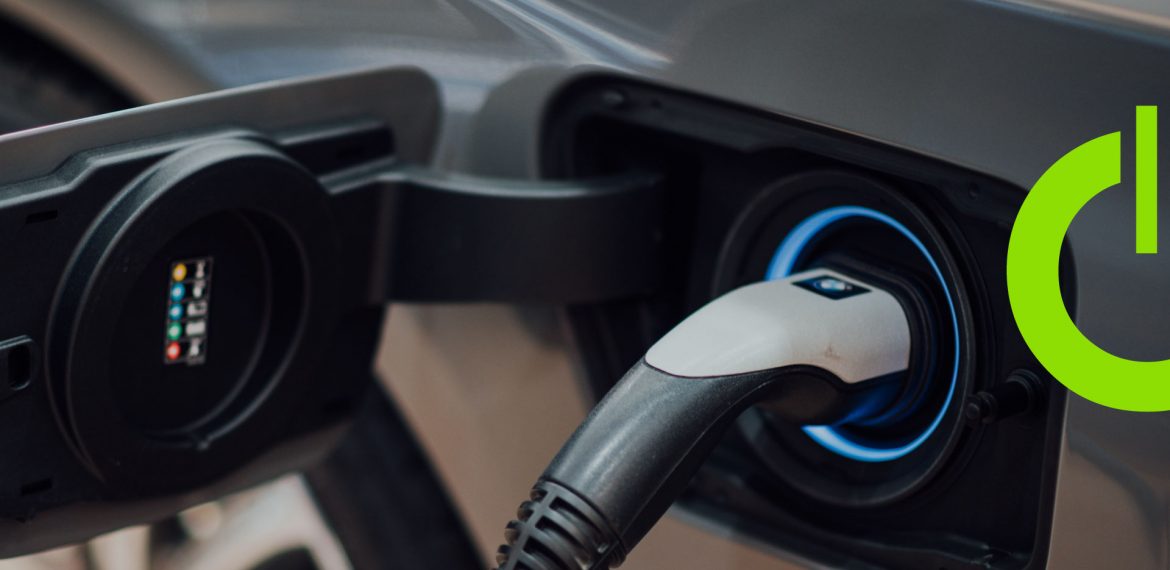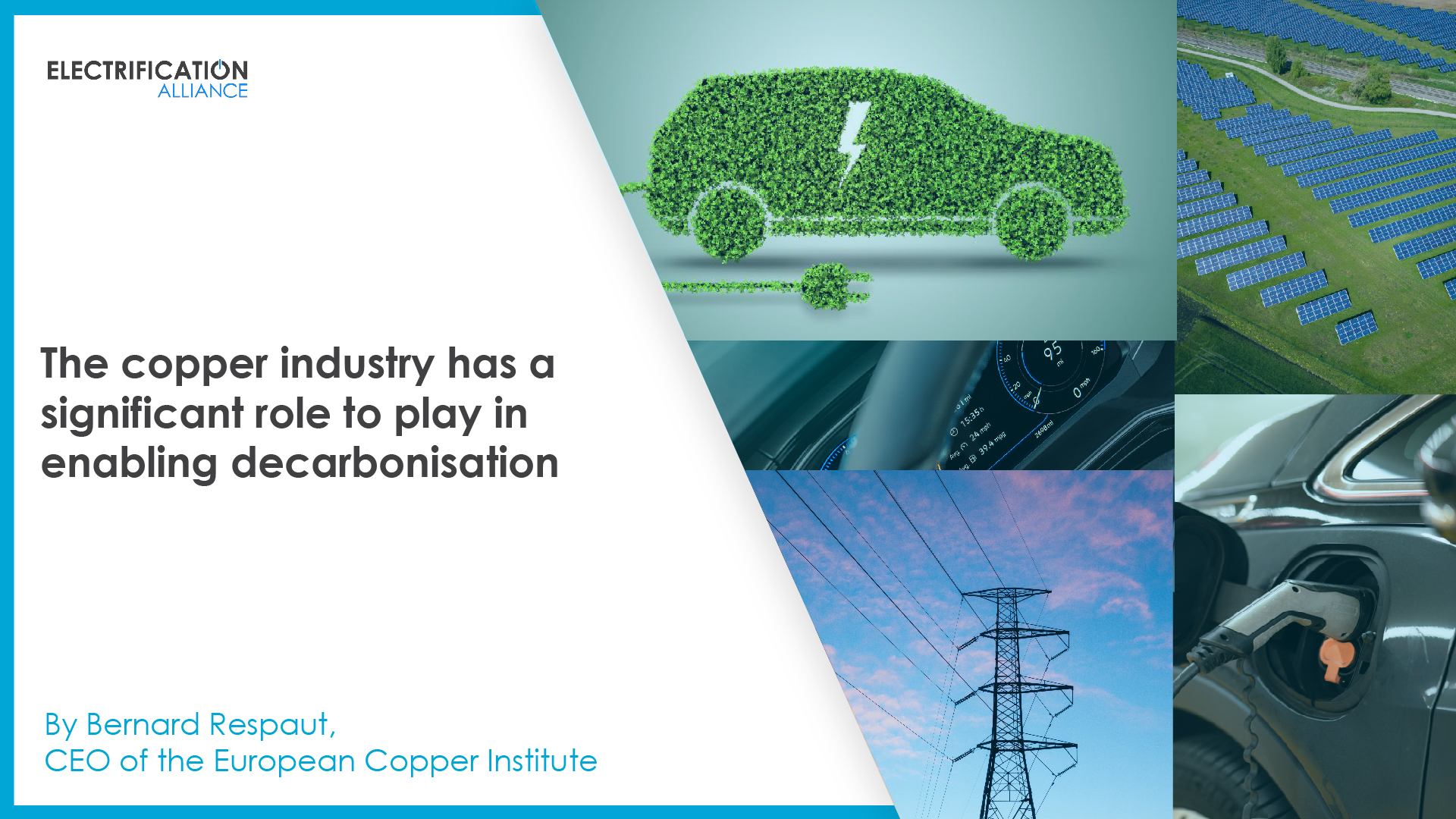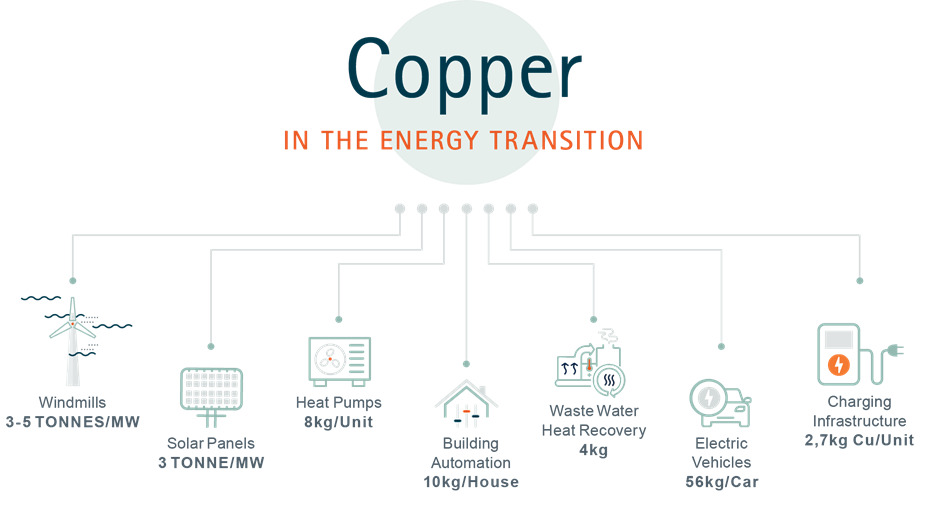
The copper industry has a significant role to play in enabling decarbonisation
The copper industry has a significant role to play in enabling decarbonisation

By Bernard Respaut, CEO of the European Copper Institute
The EU Energy Roadmap 2050 estimates that copper-enabled decarbonising technologies can abate some 75% of EU GHG emissions[1]. Indeed, copper is used across the electricity system and in heat exchange. Thanks to its excellent electrical and thermal conductivity, copper is found in everything from windmills, solar panels and electric vehicles through to power grids, charging infrastructure and building automation.
The proposals within the EU Fit for 55 package are certainly a strong step on the road to net zero. Revising legislation on renewables, energy efficiency, CO2 emission standards for cars and vans and alternative fuel infrastructure will serve to ramp up electrification as a means of decarbonising buildings, transport and industry.
Nevertheless, we have a number of suggestions as to how the various proposals could be improved.
Let’s start with the EU Emissions Trading Scheme. It should be amended to better support energy intensive industries in the transition towards carbon neutrality.. We as the copper industry are ready to contribute to the costs of decarbonisation, but as long as we do not have equally ambitious climate policies in the rest of the world, effective protection against carbon leakage is of fundamental importance given the competition we face. The current high electricity prices also highlight the importance of ensuring that the carbon price does not rise too high too fast. This should be borne in mind when revising the ETS framework.
Next up, the Energy Efficiency Directive (EED). We welcome the improvements to date – in particular the requirement for Member States to include comprehensive heating and cooling assessments in their National Energy and Climate Plans, the shift towards actual energy efficiency measurement and the strengthened provisions on energy audits. It is now important that the level of ambition of the revised energy efficiency targets is reflected in the upcoming revision of the Energy Performance of Building Directive.
Furthermore, as the EED recast references the importance of considering whole life-cycle carbon emissions of buildings, it will be important when assessing them to ensure that operational emissions and the benefits of recycling and recyclability of building materials are well integrated in the approach.
We also have some thoughts on the amendments to the Renewable Energy Directive. Some of the changes are spot on – particularly the provisions aiming to facilitate the use of power purchase agreements to support the decarbonisation of industry and the obligation for Member States to ensure that non-publicly accessible charging points can support smart charging. The provision that battery manufacturers allow real-time access to battery information of domestic, industrial and e-mobility batteries should also be applauded.
The use of waste heat in industrial heating processes is helpfully recognized as a renewables resource that counts towards the 1.1 percentage point increase in renewables in heating and cooling. To support European industries’ decarbonisation efforts,the text needs to clarify that the use of waste heat from industrial heating processes also includes its conversion into electricity for self-consumption.
On CO2 standards for cars, we support the 2035 deadline to phase out non-zero emission vehicles and believe an intermediate target of 35% C02 reduction for cars and 33% for vans for 2027-29 should be introduced to ensure a more balanced reduction trajectory.
Finally, we appreciate many of the provisions in the Alternative Fuels Infrastructure Regulation. However, we believe it should be more ambitious in increasing the power output of public charging stations per number of new electric vehicles registered, to account for the provision of energy services by battery electric vehicles without off-street parking. And, to make electric vehicle use more convenient for consumers, the regulation should prioritise the provision of charging points in residential areas where vehicles typically park for extended periods.
[1] Copper estimate based on the EU 2050 “High-RES” scenario, of the EU 2050 energy roadmap, plus additional assumptions about the uptake of emerging technologies. https://ec.europa.eu/energy/sites/ener/files/documents/2012_energy_roadmap_2050_en_0.pdf


